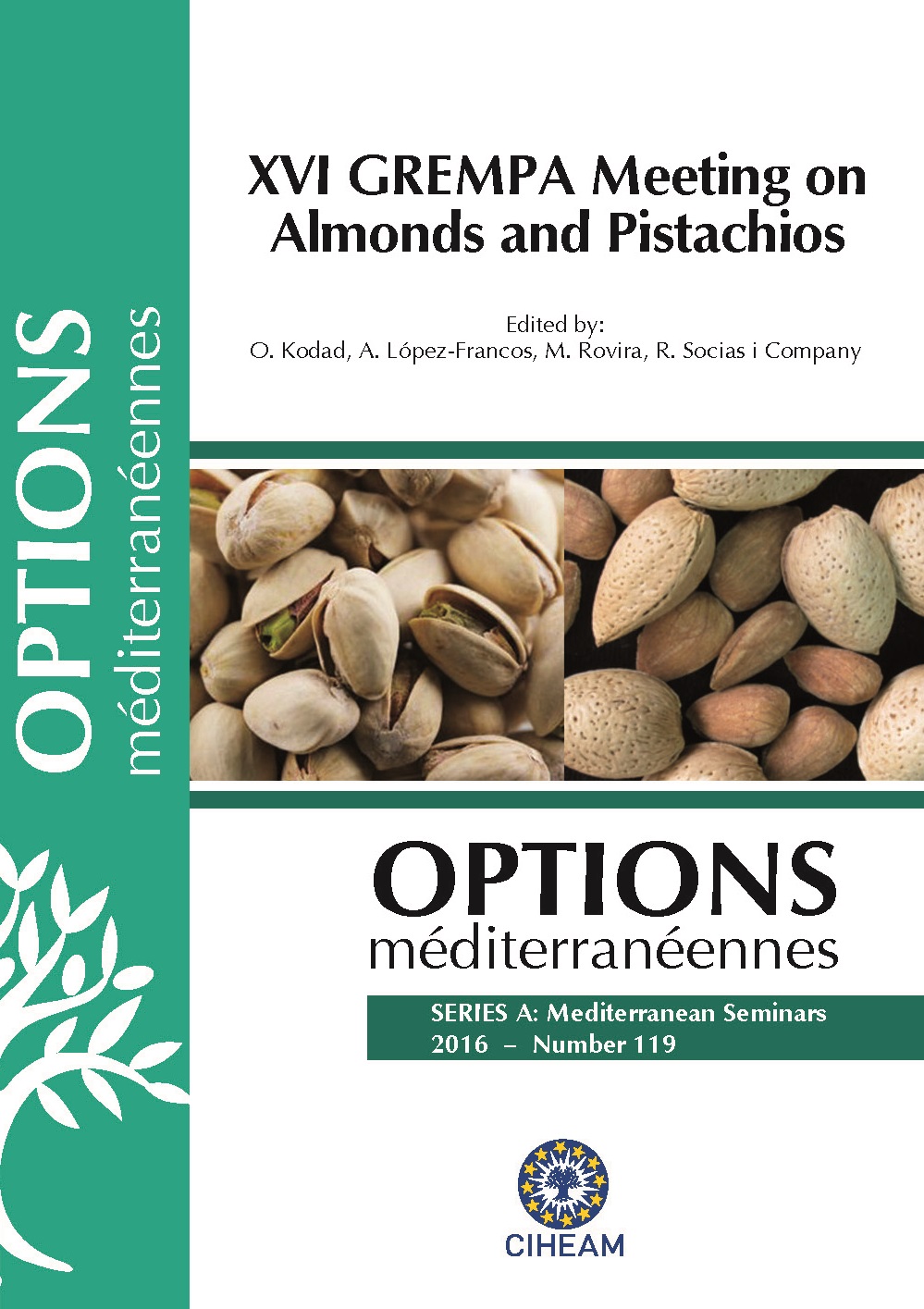| Article précédent | p. 79-82 | Article suivant |
Comparative proteomics of pistils and anthers from self-incompatible and self-compatible almonds by iTRAQ and 2D-nano-LC ESI-MSMS
It is known that the cultivated almond [Prunus dulcis (Miller) D.A. Webb] exhibits gametophytic selfincompatibility controlled by the S locus. This locus contains two genes that codify for the S-RNase and SFB proteins, which seem to determine the specificity of incompatibility. However, recent studies support the involvement of other unidentified proteins in the incompatibility system of this species. A few proteomic studies have tried to identify candidates to modifier factors of the incompatibility system in Prunus sp. using comparative proteomics of pollinated pistils. However, there are no studies in which pollen and un-pollinated pistils from self-incompatible and self-compatible individuals are compared. To identify proteins differentially expressed in the pistils and anthers of almonds with an identical S-haplotype but different incompatibility phenotypes, iTRAQ and 2D-nano-LC ESI-MSMS were carried out. Seventeen and 23 proteins were identified as differentially expressed in anthers and pistils, respectively. Most of these proteins had a metabolic or stress resistance and defence function, and some of them had been associated to pollen development, pollen dynamics or to pollen-pistil interactions. These results provide proteomic profiles of differential expression in mature pistils and pollen, and could also serve as a reference for other comparative proteomic studies in almond and in other species with the same incompatibility system.
Il est connu que l’amandier cultivé [Prunus dulcis (Miller) D.A. Webb] présente une auto-incompatibilité gamétophytique contrôlée par le locus S. Ce locus contient deux gènes qui codifient les protéines S-RNase et SFB, qui semblent déterminer la spécificité d’incompatibilité. Cependant, des études récentes soutiennent l’implication d’autres protéines non identifiés dans le système d’incompatibilité de cette espèce. Certaines études protéomiques ont essayé d’identifier des candidats facteurs-modificateur du système d’incompatibilité dans Prunus sp. en utilisant la protéomique comparatives de pistils pollinisés. Cependant, il n’existe aucune étude dans laquelle le pollen et les pistils non pollinisés, appartenant à des auto-incompatibles et auto-compatibles, soient comparés. Pour identifier les protéines différentiellement exprimées dans les pistils et les anthères d’amandiers avec un S-haplotype identique mais ayant différents phénotypes d’incompatibilité, iTRAQ et 2Dnano-LC-ESI MSMS ont été réalisées. Dix-sept et 23 protéines, exprimées de manière différentielle, ont été respectivement identifiées dans les anthères et les pistils. La plupart de ces protéines avaient une fonction métabolique ou de résistance au stress et un rôle de défense. Certaines d’entre elles avaient été associées au développement du pollen, de la dynamique de pollen ou aux interactions de pollen pistil. Ces résultats fournissent des profils protéomiques d’expression différentielle dans les pistils matures et le pollen, et pourraient également servir de référence pour d’autres études protéomiques comparatives pour l’amande et d’autres espèces avec le même système d’incompatibilité.
- [ Afficher ]
- [ Télécharger ]
- [ Exporter la citation ]
Vous pouvez télécharger la citation au format :
- [ Imprimer ]
-
Mots-clés
PRUNUS DULCISCiter cet article
Gómez E.M., Dicenta F., Martínez-García P.J., Ortega E. Comparative proteomics of pistils and anthers from self-incompatible and self-compatible almonds by iTRAQ and 2D-nano-LC ESI-MSMS. In : Kodad O. (ed.), López-Francos A. (ed.), Rovira M. (ed.), Socias i Company R. (ed.). XVI GREMPA Meeting on Almonds and Pistachios. Zaragoza : CIHEAM, 2016. p. 79-82. (Options Méditerranéennes : Série A. Séminaires Méditerranéens; n. 119). 16. Meeting of GREMPA (Groupe de Recherches Méditerranéennes pour l\'Amandier et Pistachier / Mediterranean Research Group for Almond and Pistachio), 2015/05/12-14, Meknes (Morocco) . http://om.ciheam.org/om/pdf/a119/00007368.pdf



